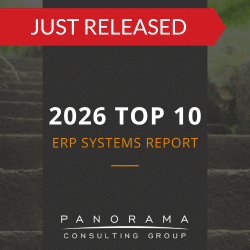- ERP failures reveal deeper issues in accountability, governance, and strategic focus, requiring executive attention beyond software fixes.
- Organizations should conduct independent failure assessments to check contracts, project plans, and alignment with successful ERP projects in similar industries.
- Before relaunching, leaders must assess readiness, reconfirm strategic goals, review partner capabilities, and engage stakeholders with transparency.
When C-level executives convene to discuss how to relaunch an ERP project, their conversations are rarely about software features. Instead, they center on confidence, control, and credibility; factors that determine whether a stalled ERP implementation remains a cautionary tale or evolves into a successful digital transformation.
Today, we’ll examine strategies that help organizations restart ERP projects and ensure that past mistakes do not happen again.
Contemplating litigation?
We have multiple software expert witnesses available for provision of reports, depositions, and testimonies.
Diagnosing Past Failure Points Before Relaunch
Restarting a stalled ERP implementation without a forensic review is like treating a recurring illness with superficial medication.
Organizations should conduct an ERP failure assessment that goes beyond vendor project reviews. An independent ERP consulting firm can provide an independent assessment that reviews contracts, tests project plans, and compares project results to companies in similar industries.
Unlike generic “lessons learned” workshops, this approach provides an objective reality check, exposing whether your ERP solutions for manufacturing, finance, or distribution were misaligned from the outset.
Carrying out a project assessment includes the following steps:
1. Assess Organizational Readiness
If the answer is negative, pressing pause to rebuild foundational readiness is a sign of maturity rather than weakness. Rushing to relaunch an ERP project simply to rationalize sunk costs often leads to deeper structural failures.
Key questions executives should ask at this stage include:
2. Reconfirm Strategic Purpose
Leaders should revalidate why they selected their ERP system in the first place.
Has the business model evolved since that decision? Are current priorities better served by revisiting the initial list of ERP systems to assess newer solutions that align with evolving operational needs?
For example, if the original objective was to deploy the best ERP system for manufacturing to achieve shopfloor integration, but the strategic pivot has moved toward advanced supply chain collaboration, continuing with the initial software choice may not create the intended value.
Our independent ERP selection process helps organizations benchmark their initial choice against an updated list of ERP systems.
3. Review Implementation Methodology and Partner Capability
Leaders should examine whether their chosen system integrator (SI) or consulting partner has legitimate expertise with the selected ERP solution or whether they overstated capabilities during sales.
If critical failures resulted from the partner’s unrealistic timelines, poor data conversion strategies, or lack of focus on organizational change management, these factors will remain unchanged unless addressed explicitly during the relaunch.
4. Engage Stakeholders with Radical Transparency
Sharing unfiltered findings, including uncomfortable truths, with C-level peers, functional leaders, and user groups is essential to position the relaunch as a strategic pivot grounded in realism.
Without this honesty, employees will interpret it as “yet another reset,” reinforcing cynicism and disengagement.
Best Practices to Fix Failed ERP Implementations
Once an organization has clear visibility into the failure drivers and confirms its readiness to recommit, restarting the ERP project becomes a matter of disciplined, strategic execution. Here are best practices to move forward and fix a failed ERP implementation:
1. Integrate Independent Quality Assurance
Independent ERP consulting services should be used to conduct quality reviews at design, build, and pre-go-live stages. This proactive intervention minimizes rework and ensures solutions are fit for purpose before deployment.
2. Strengthen Change Leadership
Mid-level managers should be equipped with coaching to handle new processes and user resistance effectively.
Also, we suggest planning for strong post-launch support by including operational experts alongside IT, so business issues are resolved quickly after go-live, building trust in the relaunch.
3. Maintain Strategic Alignment Post-Go-Live
ERP is not a one-time transformation but a digital backbone that evolves continuously.
An industrial manufacturer, for example, should continually ensure that their selected ERP remains the best ERP system for manufacturing needs such as predictive maintenance, advanced scheduling, or real-time supplier collaboration.
Learn More About Relaunching a Stalled ERP Initiative
Restarting a failing ERP project is about protecting strategic control, operational resilience, and organizational credibility. As an executive, you are not merely relaunching a technology initiative but reasserting your organization’s capacity to orchestrate transformational change.
ERP implementations fail when technology conversations overshadow strategic alignment. Fixing a failed ERP implementation is a second chance. Contact an ERP consultant to learn more.















